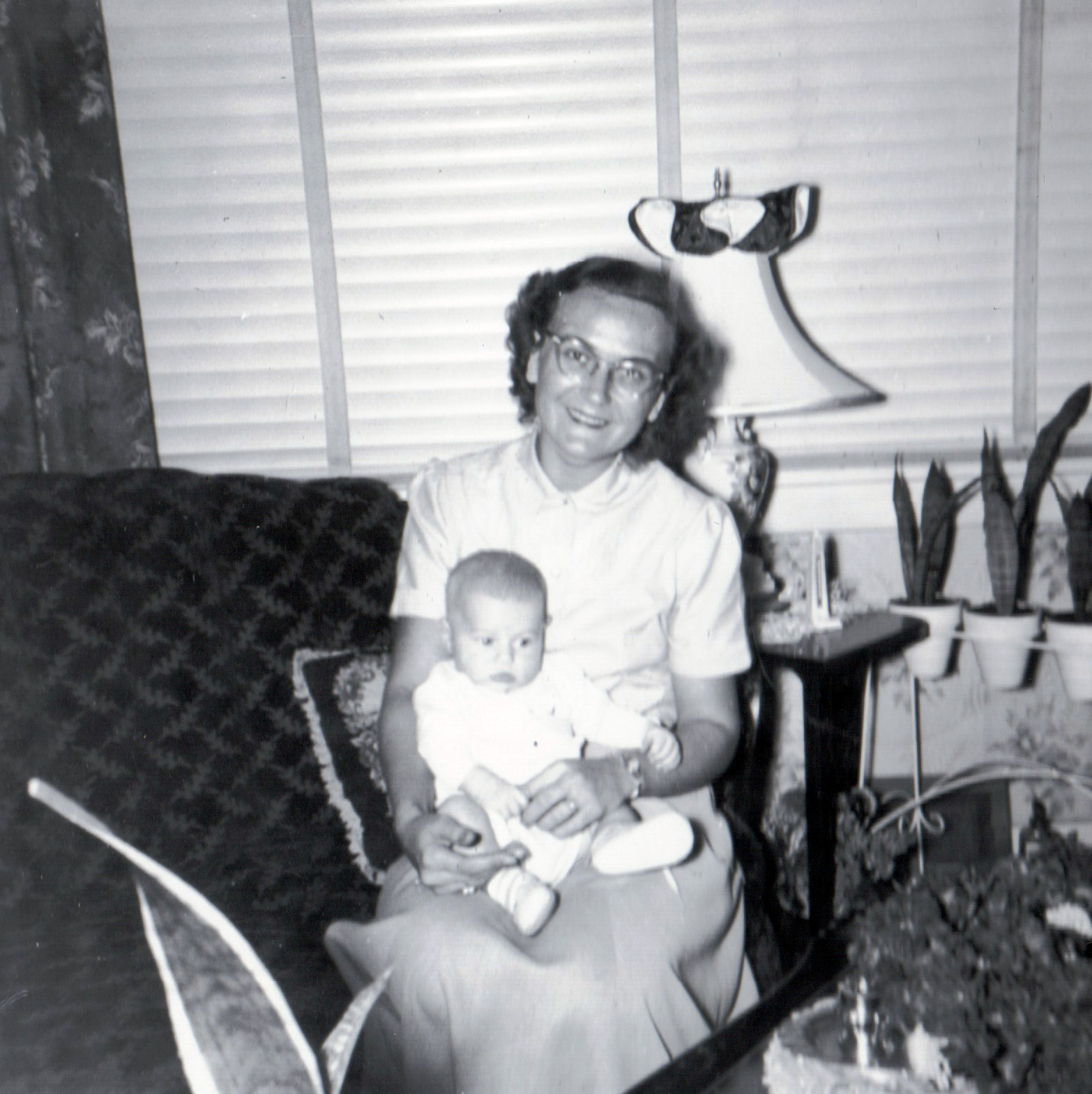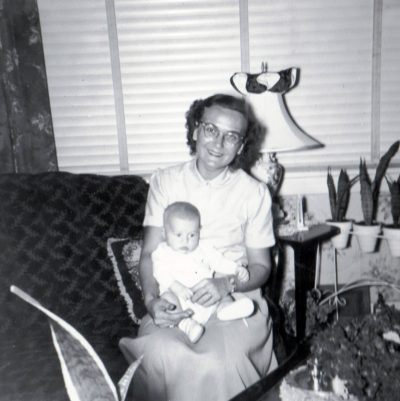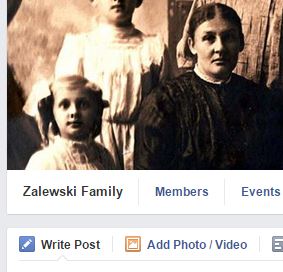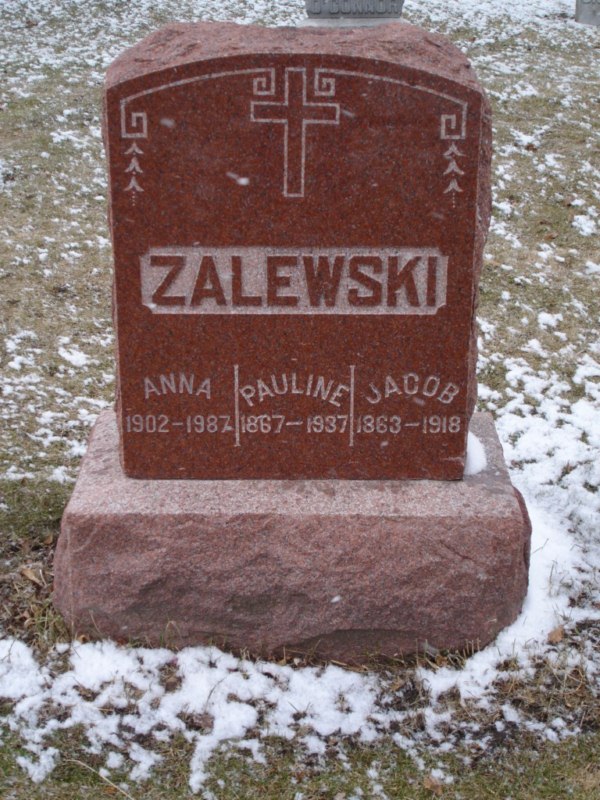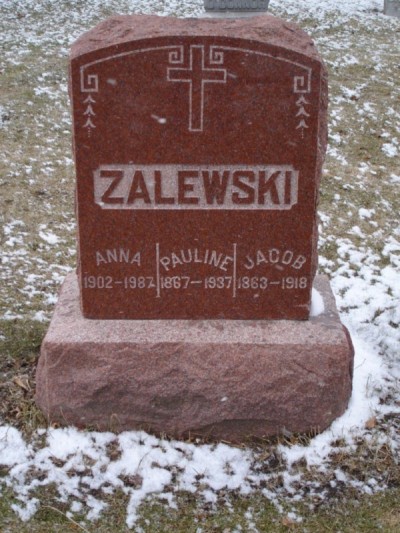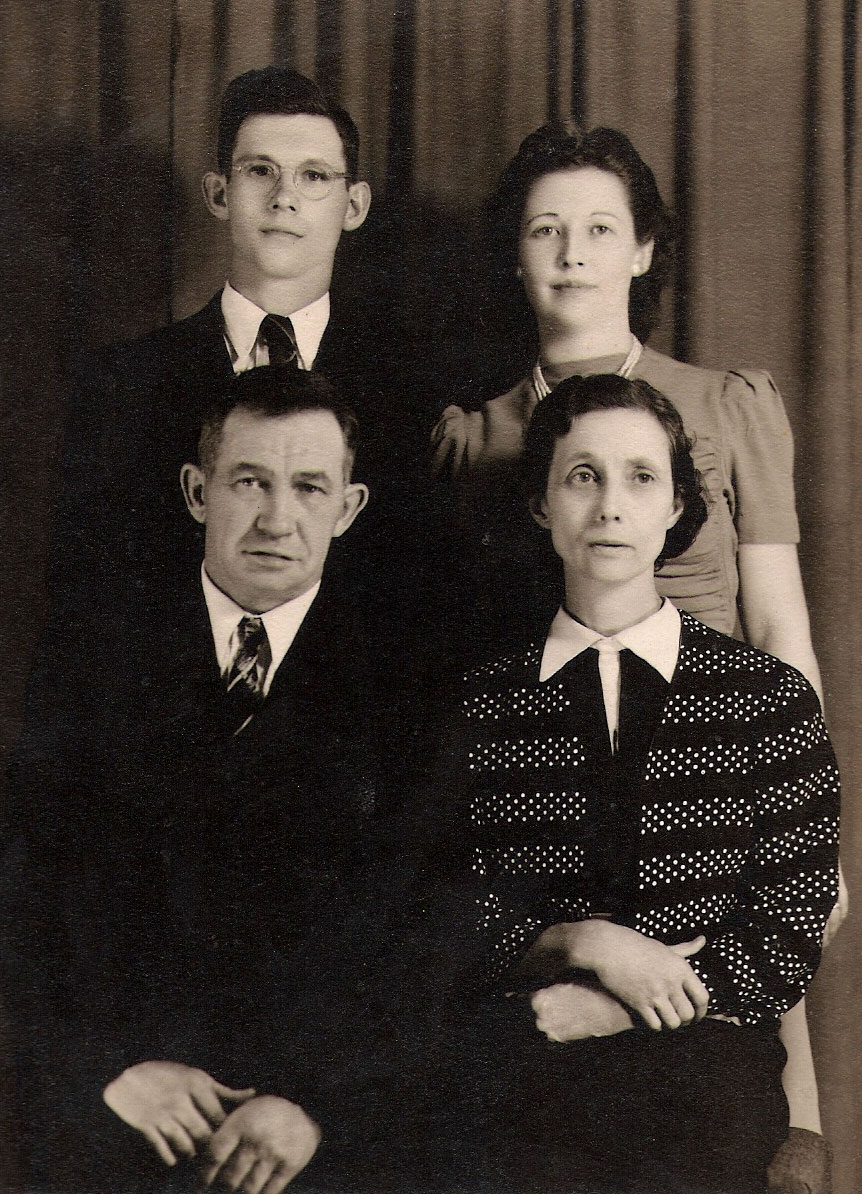The fourth ancestor in my 52 Ancestors in 52 Weeks project this year is my maternal great-grandfather, Leon Joseph DeBROUX. I’m related to Leon via my mother → her mother (Marjorie DeBROUX) → her father (Leon DeBROUX).
Leon was born on 2 November 1901 in the small town of Phlox, Langlade County, Wisconsin, which is very much the near center of the state. His parents were Joseph & Mary Philomene (LAURENT) DeBROUX. He had 5 brothers all with the middle name of Joseph and 2 sisters all with the middle name of Margaret.
Leon’s father passed away in 1918 in Phlox. Sometime between then and 1920, the family moved to DePere near Green Bay in Brown County to live with Leon’s aunt and uncle. About a year later, Leon was back in Phlox, this time marrying a local girl, Mildred Vida VAN PRICE. At the time, he was listed as being a “cheese maker” which is a standard Wisconsin job that every boy must do*. It may have been a rushed wedding, who knows, but the couple did have a child in September 1921. Sadly, the child did not make it. Two years later in 1923, their first son, Norbert, was born. He was better know later as “Dee Bee.” In 1927, my grandmother, Marjorie, was born after the family had moved south to Port Washington in Ozaukee County, where they would stay.
*May or may not be true.
Union Organizer
In 1940, Leon was listed as a laborer at the local chair factory, the Wisconsin Chair Company. By the 1950s, Leon was making a living as an AFL-CIO union organizer. I see his name mentioned many times in local stories about helping workers around the area. In an article from the Sheboygan (Wisconsin) Press in June 1953, it mentions Leon:
PORT WASHINGTON — Employees of the Harnischfeger Corporation, houses division, N. Spring St., Port Washington, voted recently to become affiliated with the Brotherhood of Carpenters and Joiners of America (AFL). Their vote was 92 for joining, 16 against, according to Leon DeBroux of Port Washington, union organizer who started on this project in May.
Hospital
One big thing that Leon was part of in Ozaukee County was getting the local hospital built. At the time, in 1938, there was no local hospital. Discussions were started after an accident in the area that cost the lives of five people because they had to go to outside hospitals. A few people, including Leon, met at his house in 1938 to figure out how to get a hospital built. In 1939, all of the planning came together and the building of a hospital was approved with the cornerstone being laid on November 3rd, 1940. St. Alphonsus Hosptial opened on May 1, 1941.
I find it quite interesting that this hospital weaves its way through my maternal family. My great-grandfather helped get it built. My mother worked there for many, many years. I was born there, as was my younger brother. Once the hospital moved to a larger facility to the south in 1990s (I think) they converted it into assisted living apartments and a nursing home. My grandmother, Leon’s daughter, would end up living there. She also sadly passed away there in 2015. I had no idea how connected our family was until I found the article about how Leon helped get it built.
Faint Memories
I was alive while Leon was alive, until I was almost three years old. I have this strange memory of him. Sometimes you think you have memories of someone you barely knew, but it was just from a family photo or something similar. I remember being on the ground by my great-grandfather’s feet at his house in Port Washington and he was using them to play around with me. I can see it pretty clearly in my mind, the chair, his feet, the living room, everything. There is no photo of a moment like this. It may be one of those early childhood memories that sneaks its way into adulthood, instead of getting forgotten like most of them. I do cherish it.
On 15 September 1982, Leon had a heart attack and passed away in Port Washington at the same hospital he helped build. He is buried in Port Washington at St. Mary’s Cemetery overlooking the rural fields of Ozaukee County.
In terms of DNA, I still definitely have DNA passed down from Leon. His mother, a LAURENT, connects me to my French-Canadian ancestry and is my connection to large family lines like the Cloutier line. I have a lot of matches on Ancestry, 23andMe, and GedMatch that I can tell are from that line.
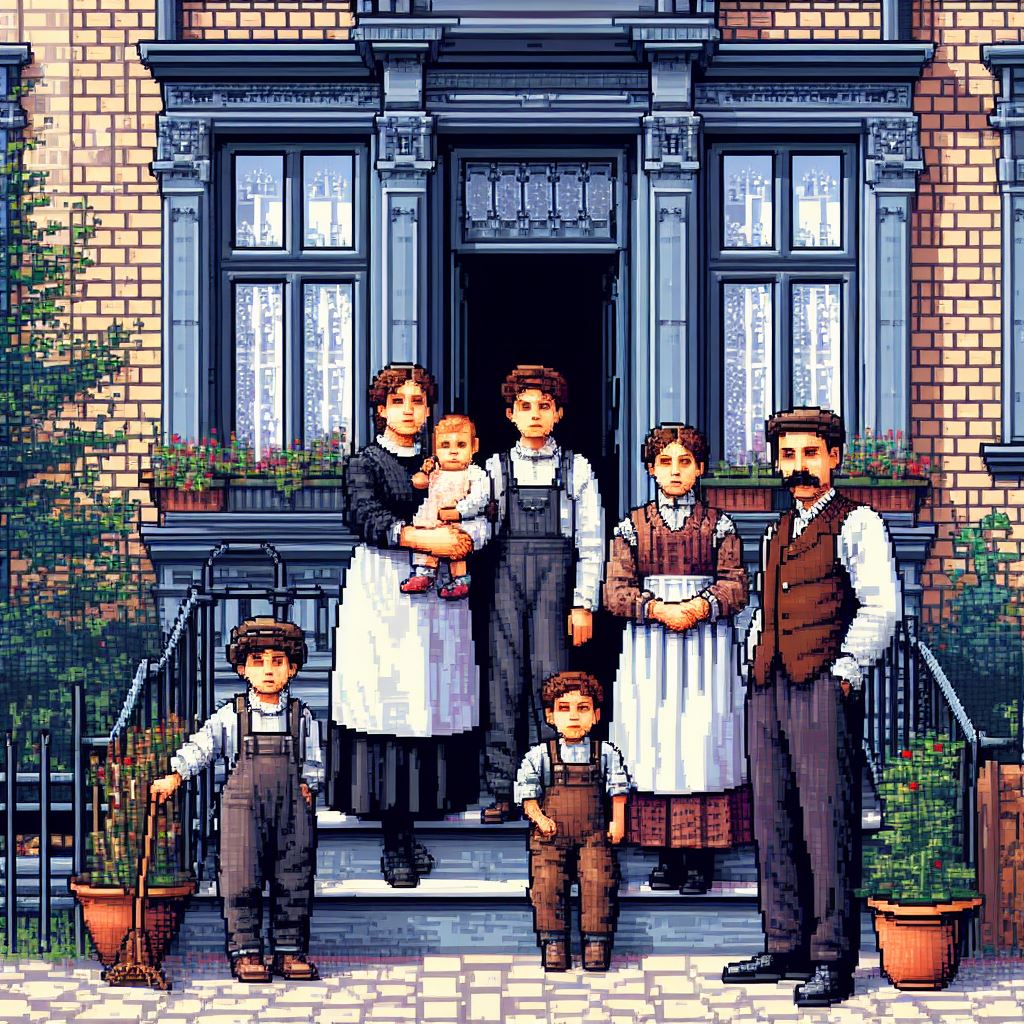
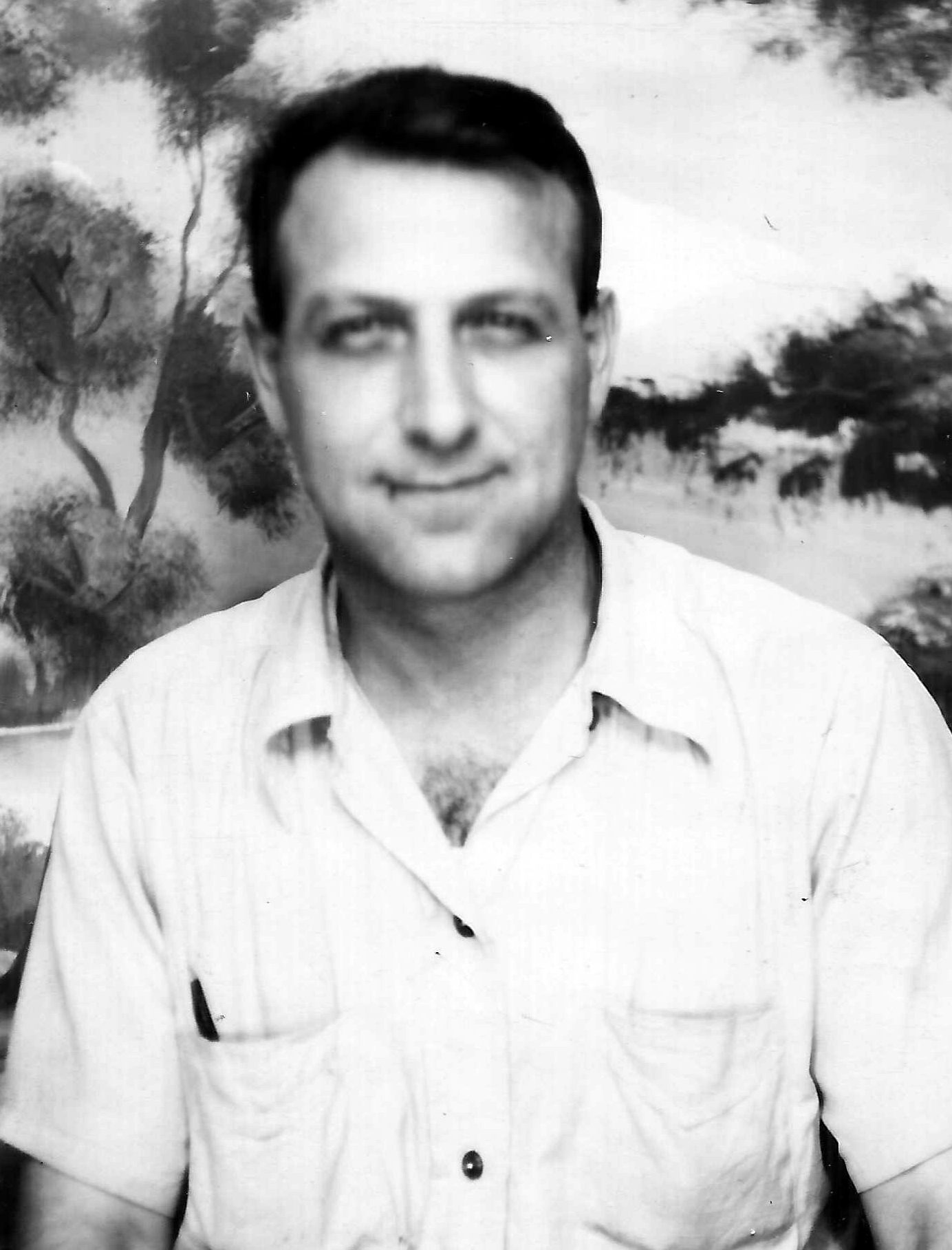
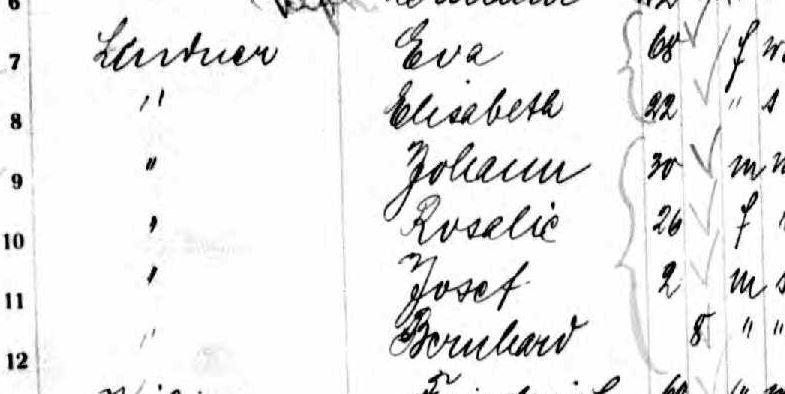
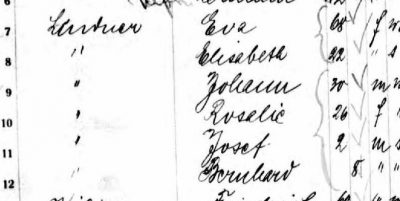
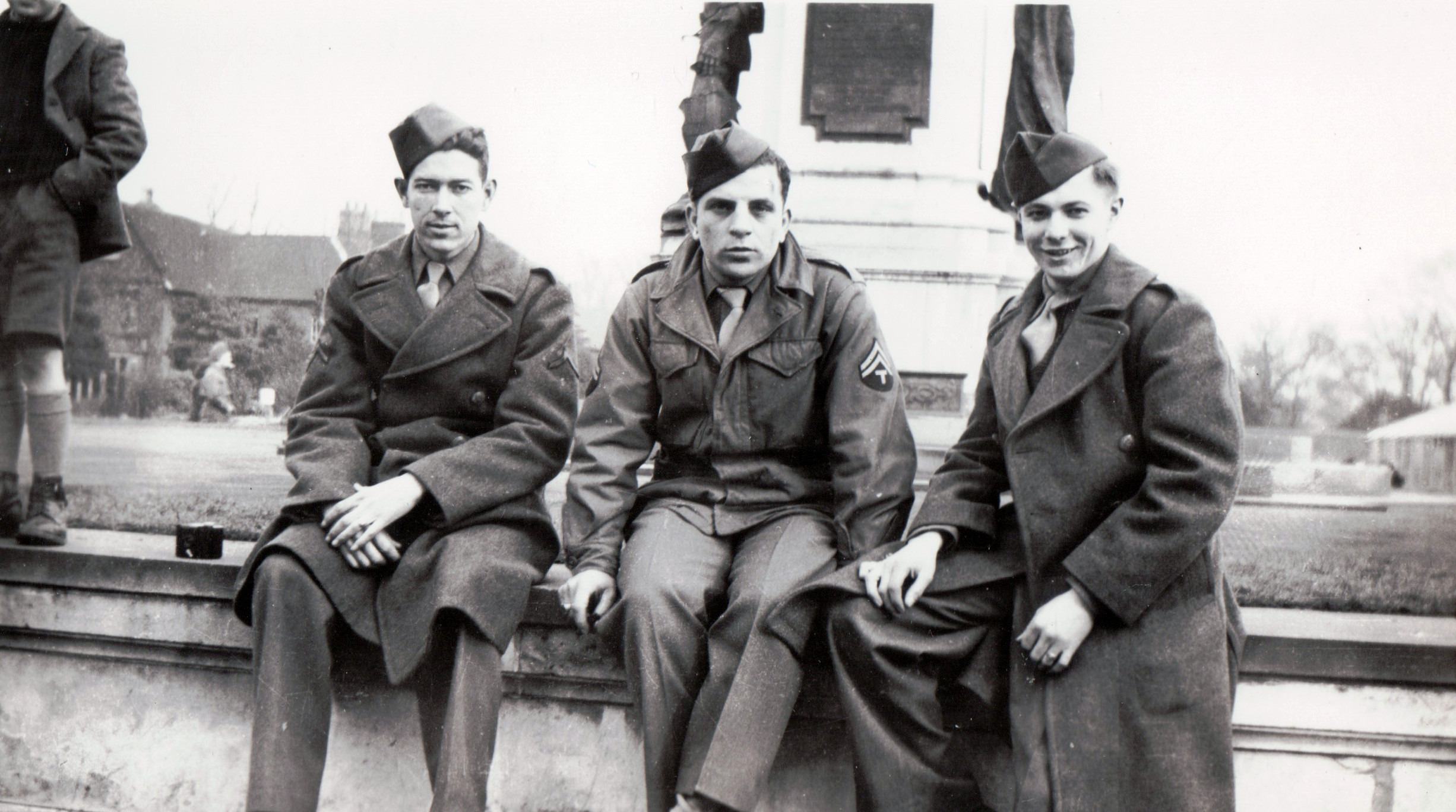
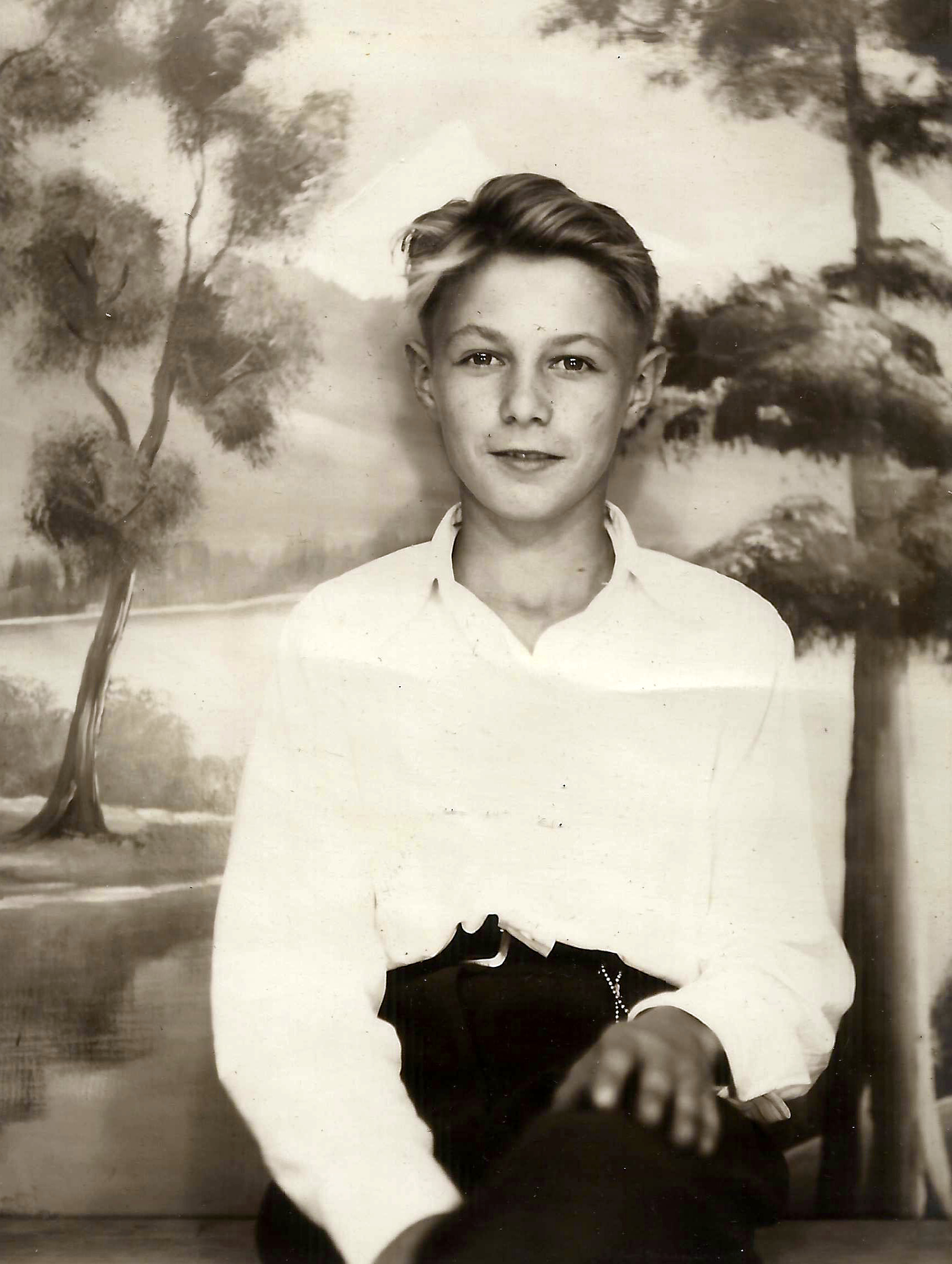
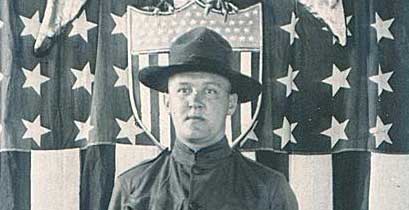

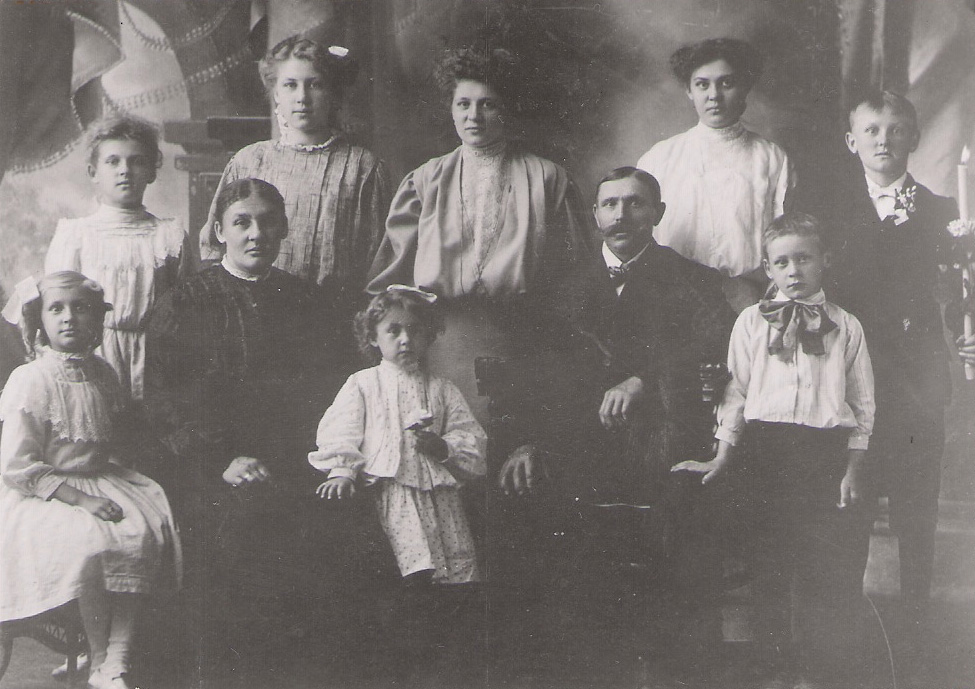
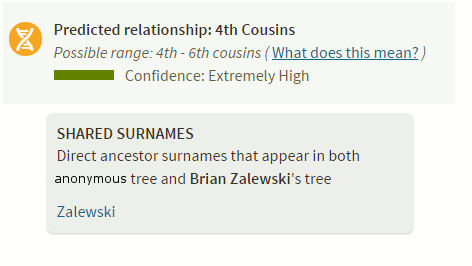 One of those days I was waiting for finally happened. A DNA match contacted me that is from the Jacob Zalewski line that I had always assumed was the brother of my great-great grandfather, Frank Zalewski. This proves that Jacob and Frank are definitely related. They are probably brothers (as all other evidence points to) but not proven 100%.
One of those days I was waiting for finally happened. A DNA match contacted me that is from the Jacob Zalewski line that I had always assumed was the brother of my great-great grandfather, Frank Zalewski. This proves that Jacob and Frank are definitely related. They are probably brothers (as all other evidence points to) but not proven 100%.